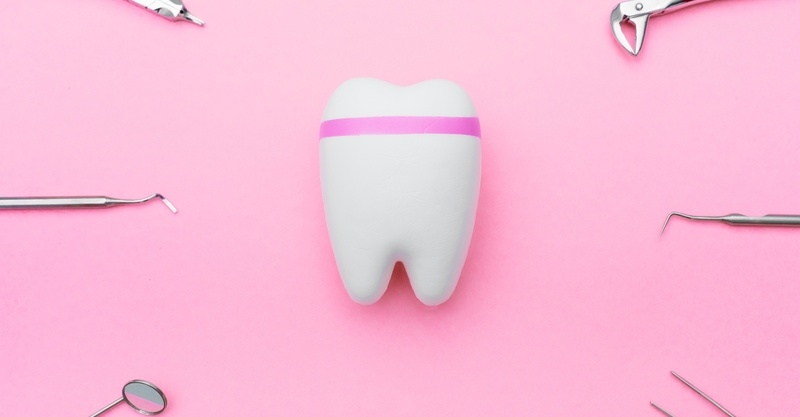Key Points
- Dental fillings are often necessary due to cavities, worn or broken teeth, pulpitis, and tooth pain or sensitivity.
- There are several types of dental fillings, including silver amalgam, composite, ceramic, glass ionomer, and gold.
- The process of getting a dental filling involves the use of local anesthetic, removal of decayed material, and polishing of the tooth.
- There are potential risks associated with dental fillings, such as wear and tear, further decay, and complications from untreated issues.
- Home dental care is crucial to the maintenance of dental fillings and overall oral health.
5 Reasons Why You Would Need Dental Fillings
1. Cavity
Dental fillings are most often used to fill cavities or areas where the tooth has decayed.[1] The filling is used to fill the hole left behind after the decayed part of the tooth is removed.
2. Worn teeth
A filling can also be used to fix teeth that have been worn down over time. This usually happens because of a bad habit, such as tooth grinding or biting one’s nails.[1] Other treatments can also be used to make sure you don’t continue the habits that led to your worn teeth.
3. Broken teeth
If your tooth becomes cracked or broken, a dental filling may also be an appropriate treatment option. Cracked or broken teeth can sometimes occur as the result of an injury to the mouth or from biting down on something hard. Cracking or breaking your teeth is more common than many people realize, as teeth are not indestructible.
4. Pulpitis
Reversible pulpitis, also known as endodontal disease, can also require the need for a filling. This occurs when the nerves and/or pulp inside the teeth become infected, which can sometimes be the result of a cavity. Removing the infected tissue and replacing it with a filling will sometimes treat mild versions of this disorder.
5. Pain and/or sensitivity
If you’re not sure what the issue is with your tooth but are experiencing pain and/or sensitivity, a filling might be necessary.[2] This includes any kind of pain localized to a certain area, sensitivity when drinking or eating cold or hot items, tingling feelings, or discomfort. If you’re experiencing any or all of these symptoms, make an appointment with your dentist to examine the tooth. They might find that one of the above issues has occurred, which will cause them to treat your tooth with a dental filling.
Understanding Dental Fillings
1.Types of Dental Fillings
There are several different types of dental fillings.[3] Silver amalgam fillings are 50 percent silver, zinc, tin, and copper combined with 50 percent mercury. Composite fillings are made from a mixture of plastic and resin that is the same color as the tooth. This kind of filling is placed into the cavity when it is soft and then hardened with a curing light. Ceramic fillings are made of porcelain, and they look the most like regular teeth. Glass ionomer fillings are usually made for children because they still need time for their teeth to grow and change. Gold fillings less commonly used, because although they are sturdy they are also more costly.
2. How a cavity is filled during the procedure.
First, the dentist will give you a shot of a local anesthetic in your mouth and/or gum so you won’t feel the drill or any other instruments used, although you will be awake during the procedure. A dental assistant will also be present.
Next, the dentist will remove the decayed material using a drill, laser, or air abrasion instrument.[1] They will test to make sure all the decayed area and debris have been removed before continuing.
After filling the tooth with one of the filling types listed above, they will usually polish the tooth as a last step in order to make sure its entire surface is smooth and not rough or uncomfortable. After polishing, they will test your bite to make sure all your teeth are aligned properly.
Risks of Getting Dental Fillings
1. Wear and tear
All fillings types have different lifespans, and your own behavior can affect how long a dental filling is likely to last. Consistent grinding, jaw clenching, chewing, and biting can eventually cause your dental fillings to wear down. They might also become chipped or cracked over time.[1] In order to be aware of this issue as soon as possible, it’s important to see the dentist on a regular basis.
2. Further decay
Sometimes the seal between the filling and your tooth’s enamel can break apart. This can make room for bacteria to get through, and the tooth, which has already experienced partial decay from an initial cavity or issue, will start to decay even further. This can sometimes lead to pulpitis or an abscessed tooth.[1]
3. Complications from going untreated
Though a filling can sometimes be less strong than a regular tooth or cause some complications, it is much worse to let a cavity or another issue that requires a filling go untreated. Untreated cavities can lead to tooth fractures, bone loss, infection, abscesses, and an inability to bite down due to pain.[4]
What to Expect with Dental Fillings
1. Different fillings, different results
There are many different types of fillings, and they all yield different results. Composite fillings are the same color as teeth, so they look more natural than silver fillings, but they are more expensive and don’t last as long.[5] Gold fillings are extremely durable, but they are very expensive and do not blend in well with your other teeth.
2. Home dental care
No matter what type of filling you choose, it will not be indestructible. This means you will need to take care of your teeth at home. Brush twice a day, floss daily, and chew carefully. Also, make sure that if you have a chronic issue that led to your need for a dental filling, such as tooth grinding, you talk to your doctor about how to deal with it (e.g., wearing a mouth guard).
Questions to Ask Your Dentist About Your Dental Fillings
- Which option for a dental filling is best for me?
- What should I do to make sure I protect my dental filling?
- What kinds of fillings are covered by my insurance?
- Is it possible any side effects could occur after my filling?
- How long will the appointment for my filling last?
Dental Fillings May Also be Known as:
- Cavity filling
- Tooth filling
- Filling
References
Frequently asked questions
What are the main reasons for needing a dental filling?
The main reasons for needing a dental filling include cavities, worn or broken teeth, pulpitis, and tooth pain or sensitivity.What are the different types of dental fillings?
The different types of dental fillings include silver amalgam, composite, ceramic, glass ionomer, and gold.What is the procedure for getting a dental filling?
The procedure for getting a dental filling involves the use of local anesthetic, removal of decayed material, and polishing of the tooth.Are there any risks associated with dental fillings?
Yes, there are risks associated with dental fillings. These include wear and tear, further decay, and complications from untreated issues.How important is home dental care when you have dental fillings?
Home dental care is extremely important when you have dental fillings. It helps maintain the fillings and overall oral health.What should I expect after getting a dental filling?
After getting a dental filling, you should expect some sensitivity in the treated area. However, with proper home dental care, this should improve over time.What questions should I ask my dentist about dental fillings?
You should ask your dentist about the type of filling that is best for you, the procedure, potential risks, and how to care for your filling at home.Can dental fillings lead to further decay?
Yes, if not properly cared for, dental fillings can lead to further decay.
Solv has strict sourcing guidelines and relies on peer-reviewed studies, academic research institutions, and medical associations. We avoid using tertiary references.









